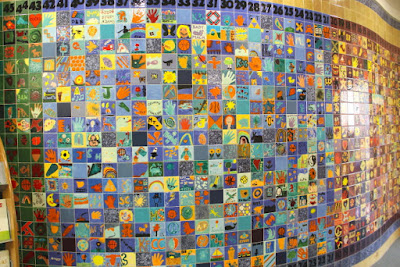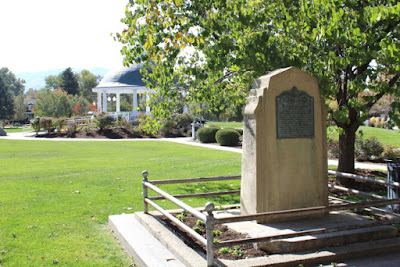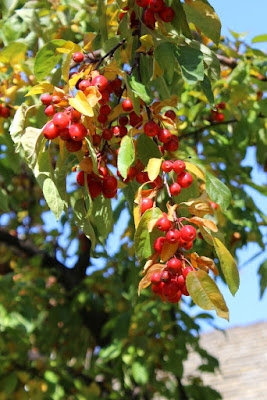Beaver (population 3,112) is located along Interstate 15 about 200 miles south of Salt lake City.
Before settlers arrived in the area, the lands were populated with various Indian tribes, including Fremont, Archaic, and Paiute. It was reported that Paiute Indians inhabited the area well before the Dominguez-Escalante Expedition passed through the region in 1776.
In 1847 Mormon pioneers established a trade route between Salt Lake City and Los Angeles, which at that time was still part of Alta California, Mexico. The trade route passed just south of Beaver and became known as the Mormon Road. Later the Mormon Road became known as the Southern Route of the California Trail.
In 1856 Mormon pioneers settled the Beaver area as part of a network of communities that were about a days ride apart by horseback (about 30 miles). Beaver was located about half way between Palivant Valley and Parowan Valley.
In 1858 the population grew quickly when numerous people migrated from San Bernardino ,California, to the Beaver area. Most of the people were engaged in raising livestock, but a sawmill and gristmill were built on North Creek and a woolen mill, a tannery, and a dairy were started in or near the settlement.
In 1872 the US Army established Fort Cameron near Beaver to protect the isolated area residents from Indian raids. The fort was active for 11 years and then decommissioned in 1883. Philo T. Farnsworth and John R. Murdock arranged for the property to be converted to the Beaver Branch of Brigham Young Academy (now Brigham Young University); however, eventually the Academy was closed and the school in Beaver was sold to a private party. The new owner razed the property, except for one building that was converted to a private residence.
In the early part of the 20th century a hydroelectric plant was built on the Beaver River east of Beaver and Beaver became the first town in Utah to be electrified. The hydroelectric plant is still in operation today. I did not drive out to the original hydroelectric plant, but there is also a small operational hydroelectric plant located near the golf course that also still generates electricity.
The golf course hydroelectric plant was constructed in 1904 and power from the plant was available every evening from dusk until 10 PM, and one morning each week for household purposes. For special events and dances, power was available until midnight. Cost of the power was 7 cents per KWH.
Two notable people were born near Beaver - Robert LeRoy Parker, who went on to become the notorious outlaw known as Butch Cassidy; and Philo T. Farnsworth, who went on to become the "Father of Television" by inventing several critical electronic devices that made television possible. Farnsworth was also the first person to create table-top nuclear fusion. The log cabin where it is believed Farnsworth was born and a statue of Farnsworth are located outside of the historic Beaver County Courthouse.
Adjacent to the Farnsworth cabin is a wagon reproduction of the type used by the Mormon Pioneers that traveled westward. During the Sesquicentennial two mules named "Ruth and Ruby" recreated the journey by pulling the wagon from Omaha, Nebraska, to Salt Lake City, Utah. The 1,000 mile journey took three months.
The historic Main Street buildings are still mostly in use with Beaver Sport & Pawn occupying over 8,000 square-feet of space. It is one of the easiest buildings to find in Beaver because there are two large murals painted on the north side of the building.
When entering Beaver from the south, there are two historic markers adjacent to the highway. The first marker describes an Indian raid on the Lee Ranch on October 27, 1866. Two of the children escaped from the ranch and alerted the Militiamen in Beaver, but the Indians called off the attack before armed men arrived to help the Lee's.
The second historic marker noted that this was the spot where the first Beaver pioneers camped when they settled in Beaver. The site is now used for a parking lot and storage facility.
The historic Beaver Stake Tabernacle was located on a site that is now a downtown park. The original building was torn down, but the Daughters of Utah Pioneers recreated the building that is now used for their museum.
Beaver's Historic Opera House was constructed in 1908 using the finest materials available because the board of directors said "...nothing is too good for the people of Beaver..." Over the years many famous people have performed at the Opera House.
There is a nice Veterans Memorial with several monuments and military artillery located adjacent to the Utah National Guard Armory in the historic part of downtown Beaver.
Before leaving Beaver, visitors are encouraged to fill their water containers because Beaver has the "Best tasting water in the United States." In 2006 the National Rural Water Association hosted an event to determine where the best tasting water in the United States was located. The "Great American Water Taste" was held in Washington, D.C. and a panel of judges from around the country sampled water from over 700 different locations and found Beaver to be #1 in the United States.
BONUS PICTURE
During the COVID-19 pandemic if you are remodeling your house and don't own a pickup, you can always move your materials by strapping them to the back of your car. Actually, you might be better off borrowing your neighbor's pickup.











































































